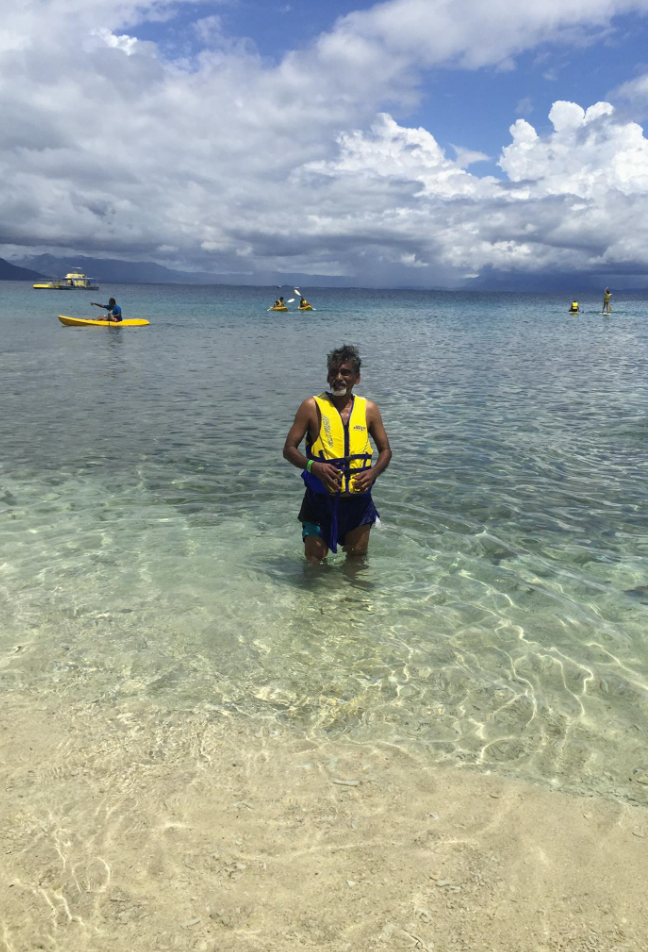Fiji Islands – A Serene Blend of Nature, Culture, and
History Our tropical escape to the Fiji Islands began in Nadi, a
warm and bustling gateway city nestled on the western coast of Viti Levu. As we
arrived, we were instantly greeted by the island’s signature
charm—frangipani-scented breezes, palm-lined roads, and the ever-smiling faces
of the Fijian people.
We stayed at the Hilton Resort, a beachfront haven where our
room opened up to sweeping views of the Pacific Ocean. The tranquil setting was
the perfect backdrop for early morning coffees and sunset reflections. The
highlight here was kayaking on the gentle waters—gliding past the horizon with
the cool ocean mist on our faces was nothing short of bliss. Vacationing in Fiji Islands. Bula, Bula the smiling Fijians welcomed us when we arrived in Nadi.
Island Magic – South Sea Island Day CruiseFrom Port Denarau, we embarked on a day cruise to the tiny but vibrant South Sea Island. This coral-fringed paradise, surrounded by crystal-clear waters, offered some of the best snorkeling and kayaking experiences we’ve had. The underwater world here was alive with colorful reef fish and dancing corals.
As we stepped onto the sandy shore, we were welcomed with a lively Fijian dance performance, full of rhythm, smiles, and infectious energy. The warm hospitality continued with a delicious buffet lunch featuring island-style cuisine, fresh fruits, and tropical drinks that added the perfect touch to our idyllic day.
Scenic Drive to Suva – Sugarcane Fields & Sacred
Temples
We then took a road trip from Nadi to Suva, the capital city
of Fiji. The drive was a green marvel—rolling sugarcane fields, rustic
villages, and children waving from the roadsides. Along the way, we made a
meaningful stop at the oldest South Indian temple in Fiji, a beautifully
preserved symbol of faith and heritage.
One
of the most memorable aspects of our trip was the culinary experience. Fiji’s
fertile land yields an abundance of fresh vegetables, tropical fruits, and
herbs, making it a vegetarian’s paradise. From spicy curries inspired by Indian
roots to island-style stews with taro, cassava, and papaya salad, every meal
was a celebration of flavor and freshness
This visit opened a window into Fiji’s rich Indo-Fijian
culture. The majority of Fiji’s Indian-origin population are sixth-generation
descendants of indentured laborers brought from South India in 1879 to work on
the sugarcane plantations. Their contribution to Fiji’s cultural and economic
landscape is deeply embedded, and it was fascinating to witness how traditions
have been preserved over time. Several historians have written about the different ethnic groups that came from the southern and Northern part of India.
The Fiji today is an amalgamation of Melanesian, Polynesian plus Indian and other indigenous tribes adjusting to the modern age of Internet and Tourism. Suva is the capital city located about 189km from Nadi where the international airport is located. Planning to do the island hopping and to visit the villages to get the glimpse of the culture.
Merry Christmas & Happy New Year!
PEACE ON EARTH!
All content copyright © by Sobana Iyengar.





